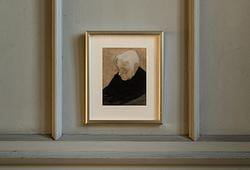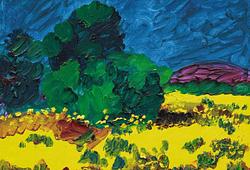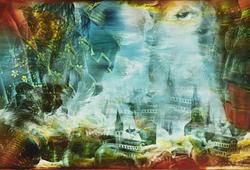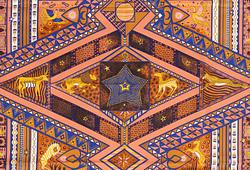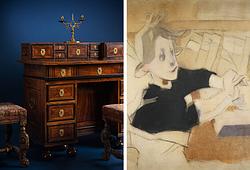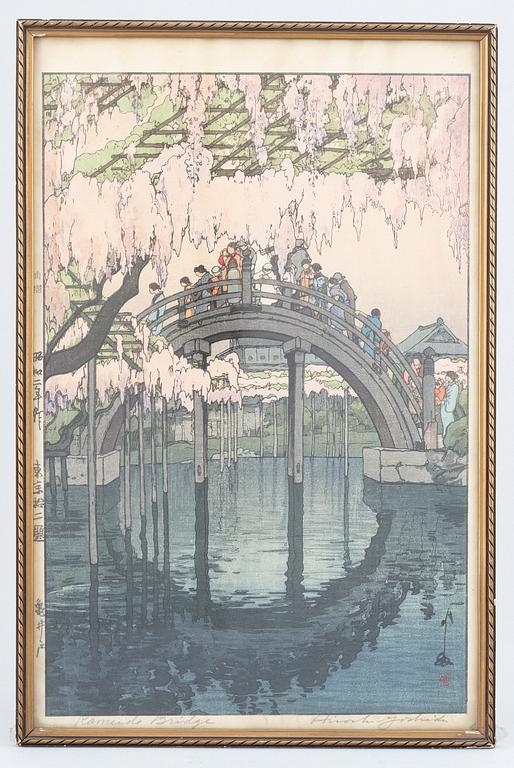Hiroshi Yoshida
Hiroshi Yoshida, after, a colour woodblock print "Kameido Bridge", Japan, 20th century.
Kameido Bridge (Kameido), from the series Twelve Scenes of Tokyo. Total measurement 42x28 cm.
Not examined out of frame. Damages.
More information
See similar at:
the Museum of Fine Arts Boston, 38.729;
Edo Tokyo Museum, 91222110;
Austrian Museum of Applied Arts,
Art Gallery of Greater Victoria.
Artist
Hiroshi Yoshida (吉田 博, 1876–1950) is considered one of the leading artists of the shin-hanga movement, alongside Hasui Kawase. Renowned for his landscapes, Yoshida traveled widely and depicted international scenes—such as the Taj Mahal, Swiss Alps, and the Grand Canyon—using traditional Japanese woodblock techniques. Known in Japan as a mountain painter (山岳画家), he spent half the year on sketching trips and had a deep passion for mountain scenery. In his later years, he founded the Japan Mountain Painting Society (日本山岳画家協会). A dedicated mountaineer, he climbed the Japanese Alps every summer, later turning his sketches into large paintings and prints.
Read more



